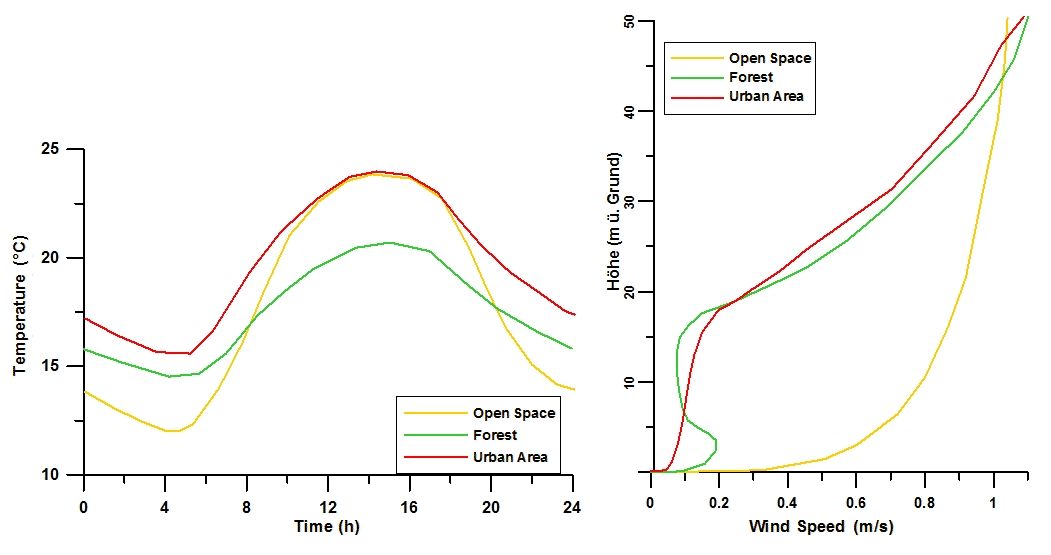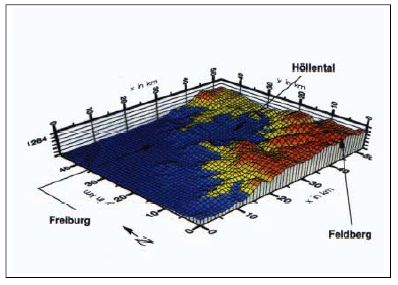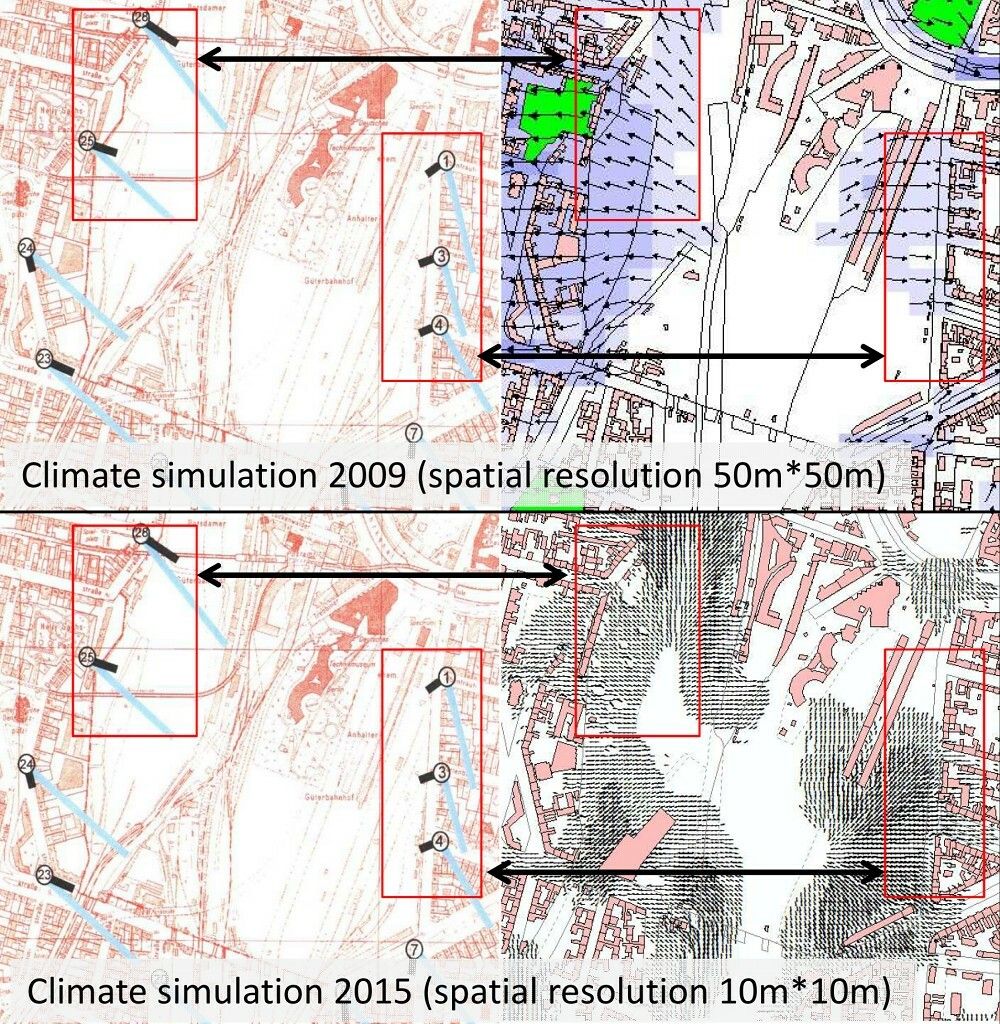One important factor in the creation and formation of an urban climate are the soil and surface characteristics, which have been changed in the urban area in relation to the surrounding countryside. The result is urban overheating and also the local urban wind circulation. Wind and temperature as well as quanta derived from them are the dominant factors affecting the assessment of urban climate from the aspects of human bio-meteorology and air quality.
The investigation and recording of the urban climate can be carried out with the help of various methods. These include field measurements, long-range ascertainment methods, wind tunnel studies, and the application of numerical simulation models.
Direct numerical simulation models are particularly well capable of representing the meteorological quanta, which are spatially and temporally very strongly variable, due to the great complexity of the building structure.
The detailed calculation of the wind and temperature conditions in the Berlin area within the scope of this actualization has been carried out using the FITNAH (F low over I rregular T errain with N atural and A nthropogenic H eat Sources) model. Groß 1993 and Richter & Röckle n.d. present detailed mathematical and physical descriptions of the model. Further detailed indications for the basic structure and approach of the three-dimensional FITNAH model, and for the interpretation of the model results, can be seen herein, on the basis of an exemplary comparison with measurement data, under Methodology/Supplementary Notes.
Generally, numerical simulation models are accepted for use in many fields of meteorology, since the data obtained provide important basic information for many areas of life (cf. Overview of the Most Important Models). The weather forecast for the next 1-5 days is obtained almost exclusively by means of such complex and extensive computer models. Knowledge of possible changes of our global climate over the next decades can also be derived from such calculations. And finally, models of a similar type are used to calculate the local and the regional distributions of meteorological variables in the atmosphere (Groß 2002).
Independent from the various scales and task definitions, all models are based on the same mathematical-physical system of equations. Only in detail are there scale-specific differences.
Meteorological and synoptic general conditions for model calculation
Along with determinations internal to the model, the meteorological general conditions also play a major role. Under the complete project, two model runs were conducted with the meso-scale climate model FITNAH for a high-summer weather situation with a horizontal resolution of 10 m. The first model run is based on an allochthonous west wind weather condition occurring relatively frequently in Berlin during the summer months. The second model run is based on an autochthonous weather condition without higher-level wind influence used regularly for an analysis of the urban climate. Additional data, differentiated in space, were derived from the various climatological parameters from the resulting meteorological fields. On the whole, therefore, three supplementing extensive data sets are available.
During the high pressure weather conditions (autochthonous weather conditions) the local climatic special features of a landscape can be expressed very well. Such a weather condition is characterised by a cloudless sky and a very weak, overlaying synoptic wind. In case of the numeric simulations carried out here, the large-scale synoptic general conditions were laid down accordingly:
- Cloud cover 0/8
- no overlaying geostrophic wind
- relative humidity of the air mass 50%
- 19°C air temperature at 09:00 p.m.
The comparatively low wind speeds at a low-exchange weather condition cause a reduced exchange of air in the air layer near the ground. A simultaneously high irradiation and emission can consequently lead to local human bio-meteorological and air-hygienic polluted areas. Characteristic for this (high-pressure) weather condition is the origin of independent cold air streams (corridor winds), which are driven by the temperature gradient between the cool open spaces and the warmer settlement areas.




